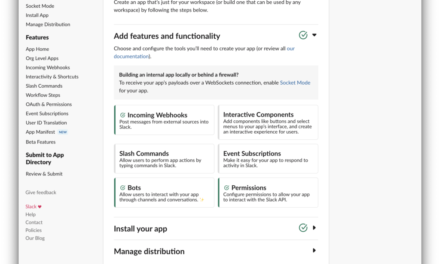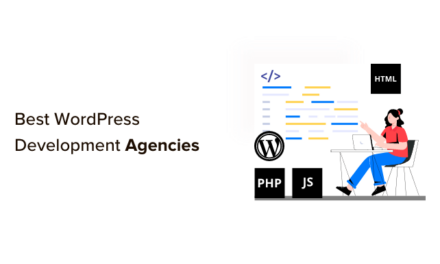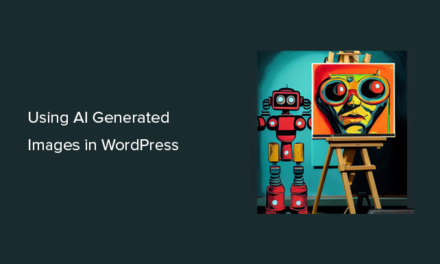Can we talk about the About page for a minute? I know it doesn’t usually merit as much attention because it’s not selling your product or service, but it’s still an important part of your site’s identity.
While I can’t give you a tried-and-true formula for how to make an About page shine (because it’s going to be different for everyone), I can provide you with general tips on what you can or can’t do. I’d also like to share 10 About page examples from around the web that make excellent use of modern design trends. Who knows? You may be inspired to revamp your own WordPress About page after seeing these.
In this post:
WordPress About Page Dos and Don’ts
Although the About page may not get as much play as, say, the homepage, it’s still deserving of as much attention and care (from you) as any other page on your site.
Rule #1: Location, Location, Location
Include it in the header and/or footer. There’s no reason to hide the location of your About page. If it’s something you don’t want people to find, then don’t create one. If it is, then put it right where they know to look.
Rule #2: Style Consistency
However you’ve styled the rest of your site’s content, the About page should follow suit. Company About pages, much like the rest of a website, should be uniquely designed and written to align with your brand. In addition, if you’ve used shorter sentences and paragraphs, stylized headers and subheaders, and bullet points to break up text everywhere else, plan on doing so here, too.
Rule #3: Do More with Less
Don’t overdo it. If you there isn’t much to say because your company is new, there’s no need to push it. Write as much or as little as you need to. As you’ll see in the examples below, sometimes you can communicate a lot more about who your company is with minimal copy.
Rule #4: Skip the Stock Photos
The About page is where you focus on you. Even if the rest of the site uses stock photography, you should consider skipping it here. Include real photos of your company in action and give visitors a reason to feel more connected to the people behind it.
Rule #5: Don’t Be Boring
Every company has a story to tell. This is the place to share yours. Put your unique voice to use and demonstrate how passionate you are about your company’s values and mission.
Rule #6: Be Honest
This rule really should apply to any page on your website, but it’s worth repeating: be honest. Be honest about who you are, where you come from, what you do, and what you can promise your customers.
This means sharing information about your company that’s positive, inspiring, and yes, 100% true. Avoid the superlatives, but don’t be afraid to show how awesome you are by highlighting impressive facts (like the 500 customers you had in your first year of business or the unique patent your company filed when the CEO was 13 years old).
Rule #7: Shine a Light
No man is an island, and the same goes for every business. Do you have an awesome team running things behind the scenes? Show them off. Do you have rave-worthy partnerships that helped you get to where you are today? Give them a shout-out. Are you proud of what your customers have achieved with the help of your product or service? Give them some airtime here.
Rule #8: Keep in Contact
Even though this page is meant to tell your story and give visitors a better idea of what’s going on behind the company, that doesn’t mean it should be devoid of the contact points you include everywhere else. While you’re talking to your visitors here, remind them as to how they can reach you—especially if you have an active presence on social media. Include contact forms for newsletter or blog sign-ups, too.
10 Inspiring About Pages You Need to Check Out
Now, let’s see how others have taken these About page dos and don’ts and made them all their own in unique, creative, and inspiring ways.
1. Adham Dannaway

Adham Dannaway is a well-known UX/UI designer, so it’s interesting to see what he’s chosen to do with his own About page. For starters, it’s really simple; nothing too crazy in terms of imagery and it’s light on text. However, if you take a closer look at what he’s actually written, you’ll get a good sense for his voice and personality through the subtle touches of humor and pop culture references he infuses throughout.
2. Airbnb

Here’s another example of an About page that takes the simple route. There’s a short intro up top that explains when Airbnb was founded and what they do. The big draw of this page, however, is the section that calls out their impressive statistics. Rather than talk about how they’re the “most popular” or “the first” or “the biggest”, they just lay the numbers right out there for visitors to see. Those are impressive enough without all the hyperbolic fanfare.
3. Bluecadet

Bluecadet, an East Coast-based digital agency, has executed a number of About page “dos” really well. They use parallax scrolling with sharp bursts of color to keep visitors engaged as they read through the information on their page. They’ve also broken the content up into bite-sized chunks, so it’s easier to tackle than one large, intimidating block of text.
4. Canva

Aside from a brief explanation up top about what Canva offers, there isn’t much on this About page about who they are as a company and where they come from. For a company like Canva that seeks to empower users to create their own designs, this approach makes sense. They use the bulk of the page to demonstrate their offering through strong visuals and let their customers speak on their behalf.
5. Clorox

Everyone’s familiar with the Clorox brand; they’re the ones responsible for keeping our whites white. That’s probably why they’ve chosen to dedicate their About page to something else entirely. They trade off between highlighting the charitable organizations they’re involved with (which are related to their mission) and providing interesting educational tidbits about bleach.
6. Creative Market

Creative Market could use their About page to talk about why they started their site and how proud they are of the community of web designers they’ve amassed, but they know the site isn’t about them. That’s why, after a brief introductory statement, they leave the rest of the page up to the people who power their website—from their internal team members to the community of designers who fuel the creative content found within the site.
7. DoubleDutch (now Cvent)

The DoubleDutch About page is sparse on details about the company, though they’ve done a good job in hitting the key highlights of an About page. They showcase their trust builders, provide snapshots of their team, and break down their company history into a basic timeline. The best part about this page is that they bring their story full circle, connecting the idea of “energy” that appears in the first section with the animated contact banner at the bottom of the page.
8. Ghost Horses

With one quick scroll through the Ghost Horses About page, you’ll have a good idea of who they are. They’re a design agency that understands the power of strong visuals and succinct copy. Each section of the page is animated, too, which probably goes a long way in keeping visitors engaged (especially helpful since non-tech-savvy visitors probably don’t know the industry jargon they include here).
9. Grain & Mortar

There are only two paragraphs of text on Grain & Mortar’s About page and they should tell you everything you need to know about this company. Take this line, for instance: “Doing what we love hinges on finding the right client partners, so we’re dedicated to finding the ideal people to work with – those who value their craft, value design, value our input, and also happen to be nice, genuine humans.”
Then take a look at their page. It’s covered in well-framed, high-resolution photos and videos of their team in action. It looks fantastic and it supports the story they’re trying to share with their audience.
10. Kittie’s Cakes

I’d have to say my favorite thing about this About page for Kitties Cakes is the choice of typography. As you know, a poorly selected font or font pairing can wreak havoc on your site’s design and completely turn visitors off from wanting to explore further. The co-mingling of a cursive font with a basic serif font looks fantastic on this page and helps add to the personality that I believe the two owners are trying to convey.
Wrapping Up
As you can see, the About page doesn’t have to be some overdrawn page that talks about how your company was founded in 1999, changed ownership 20 times, and is now ready to start making customers happy. (Hopefully, that’s not how your story goes, but you never know!)
The About page is your time to really let the personality and unique story behind your company and its mission shine.
Tags:











